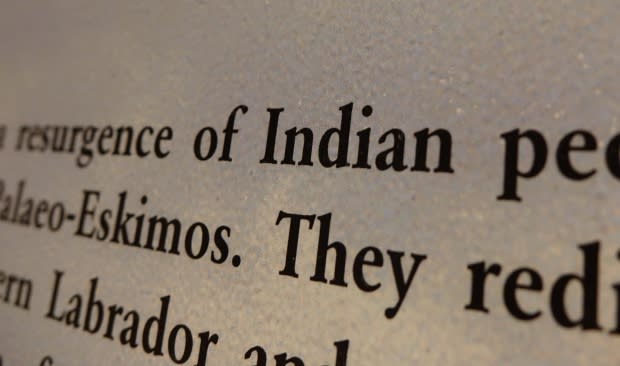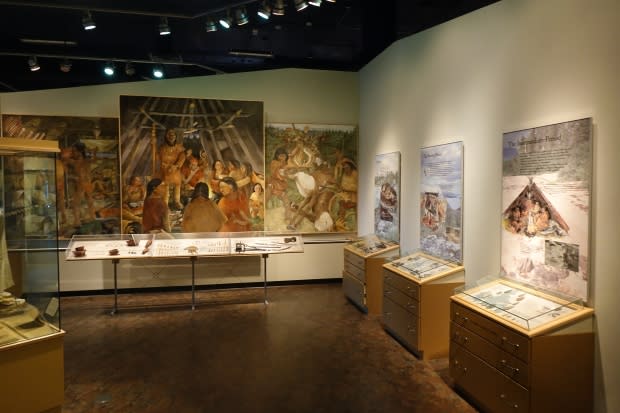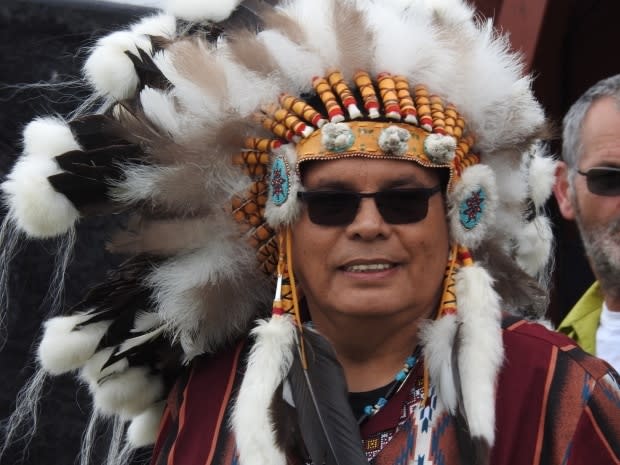The Rooms reviewing exhibit referring to Beothuk people as 'Indians'
The Rooms Provincial Museum in St. John's is reviewing an exhibit which describes the first inhabitants of Newfoundland and Labrador as "Indians."
Several informational panels in an exhibit dedicated to the Paleo-Eskimo and Beothuk describe the life of these "Indian populations" before they disappeared.
The panels, designed in the early 2000s, have been part of the permanent collections at The Rooms since the cultural complex opened in 2005.
"Imagine the number of visitors that go to that site on a daily basis and that are seeing those [words]. We're further educating people [that] it's OK to use that kind of language," said Chief Mi'sel Joe of the Miawpukek First Nation.
Joe added that education is at the heart of reconciliation efforts with Canada's Indigenous people.
"It matters in the sense that we're teaching [people] how to look at us in a proper way … the language and the racism and the prejudice that's been there for years is part of that word, 'Indian.'"

Anne Chafe, the CEO of The Rooms, said in a statement that panels displayed in the exhibit were developed in consultation with an advisory committee that included Indigenous members.
The Rooms takes its responsibility to the Indigenous communities of our province very seriously, and with a great deal of respect and humility. - Anne Chafe, CEO, The Rooms
"At that time, the terms used to refer to the pre-contact Indigenous cultures were reviewed by the Advisory Committee and accepted as widely used cultural terminology," she said.
Daniel Pottle, the director of First Light, the St. John's-based Indigenous friendship centre, also said the words used appear to reflect the historical context in which they were written.

Aiming for 'more current approach'
Chafe said staff are currently reviewing the Rooms's Collections Gallery, "with the goal of reflecting a more current approach to the presentation of Indigenous cultures."
She said this process should take between 12 and 18 months.
In the interim, Chafe said, a new label for the exhibit is under development to explain the evolution of the terminology used to describe Indigenous people in Newfoundland and Labrador "within the context of current practice."

In her statement, Chafe said exhibits at the Mary March Provincial Museum in Grand Falls-Windsor were updated in 2018.
She added that The Rooms is currently exhibiting work by several Indigenous artists, including Nelson White, Logan MacDonald and Billy Gauthier.
"The Rooms takes its responsibility to the Indigenous communities of our province very seriously, and with a great deal of respect and humility," the statement said.
Joe said the museum's continued use of the word "Indian" is just one example of colonial terms used in Newfoundland and Labrador that haven't caught up with the times.

He said the Mary March Museum, named using the English name for one of the final Beothuks, Demasduit, and Mount Peyton, named after the settler responsible for killing Demasduit and her husband Nonosabatsut, are similar.
"We have to look at that kind of history and say listen it's time to change. We know that the statue of [Edward] Cornwallis has been torn down because of this proclamation [in the] 1700s to mass kill all Aboriginal peoples in Atlantic Canada. We need to get people thinking," he said.
"I know there is going to be pushback, there is going to be racist remarks and prejudice, but that's fine. We've been [facing it] all our lives. Nothing changes there."
Read more from CBC Newfoundland and Labrador


